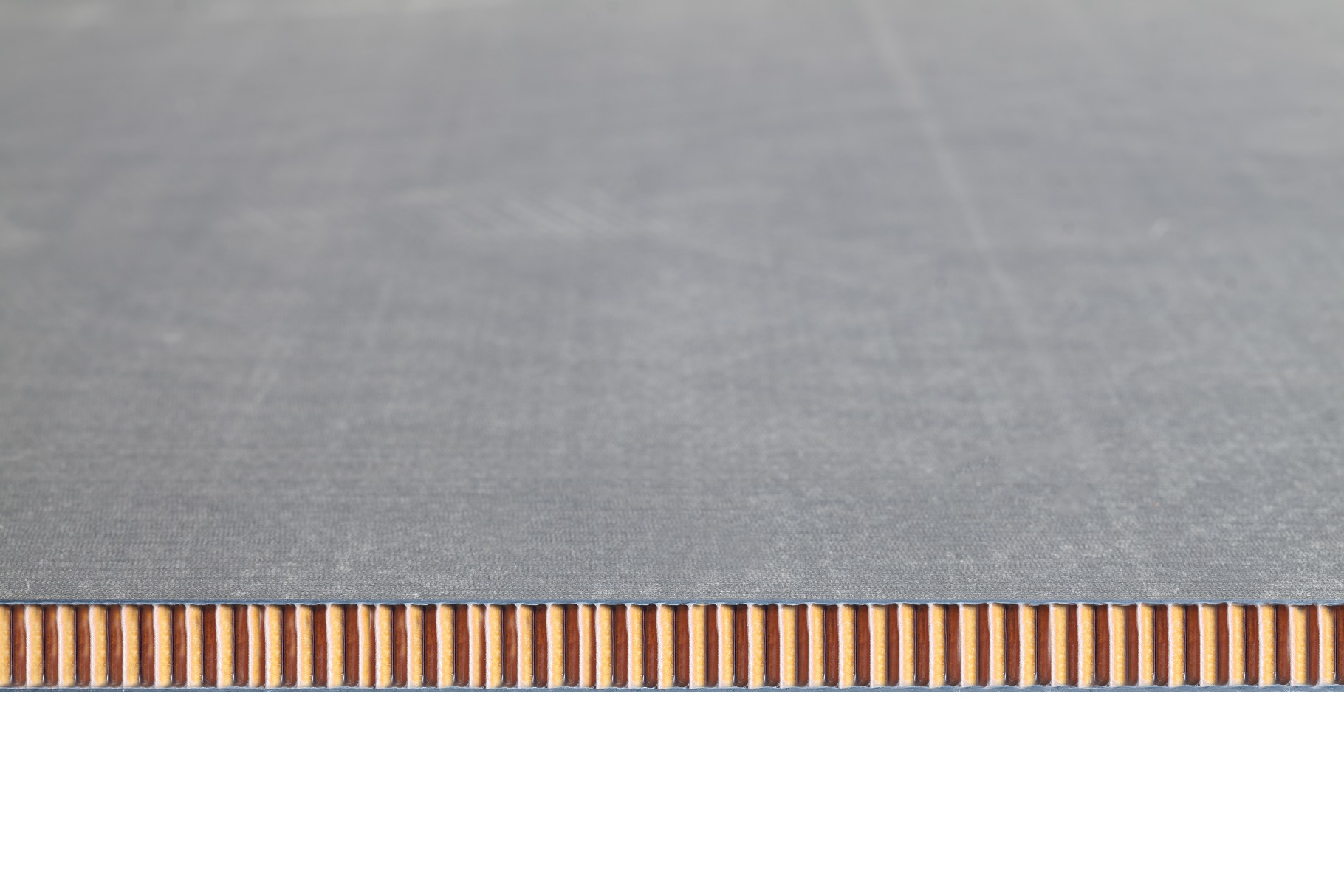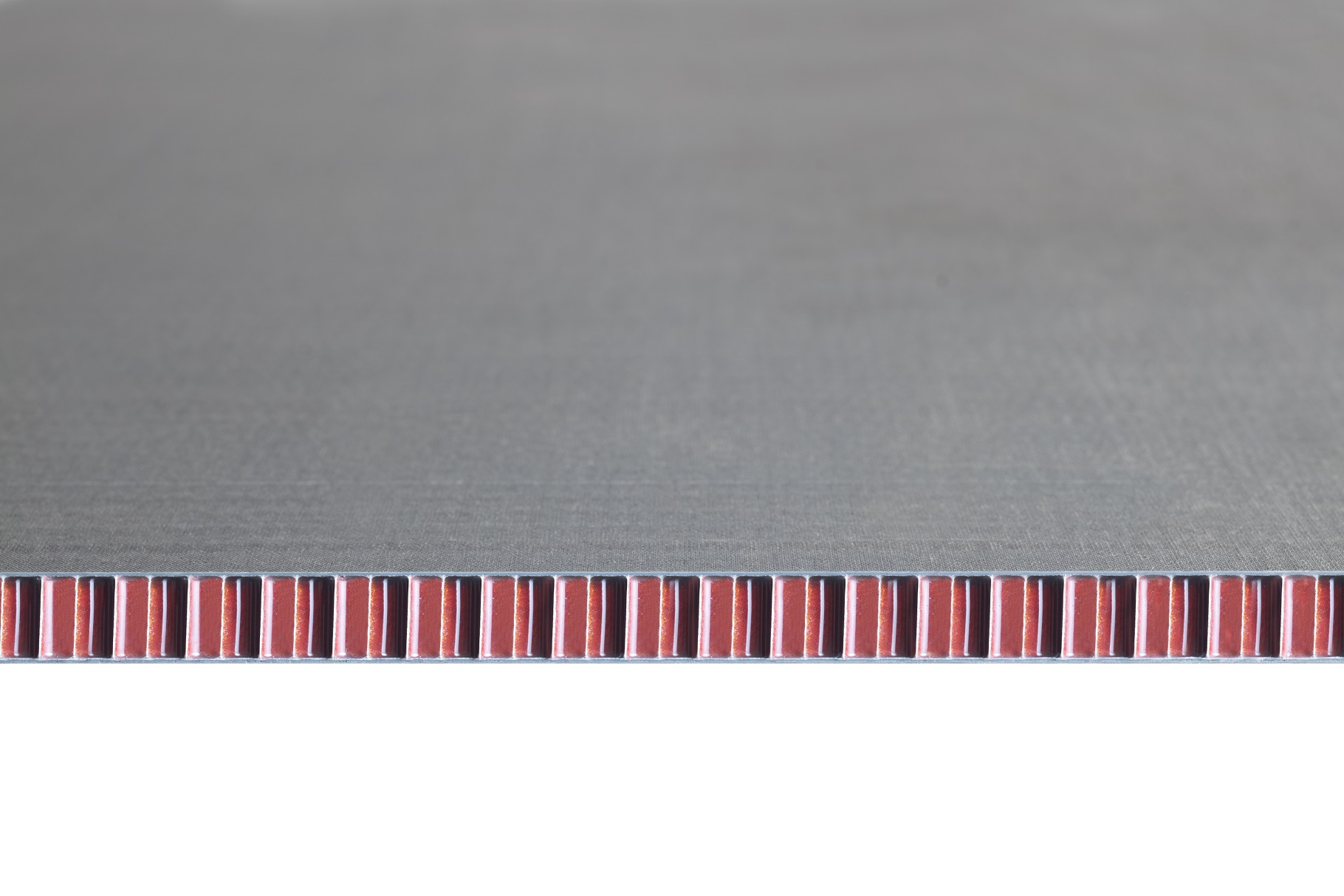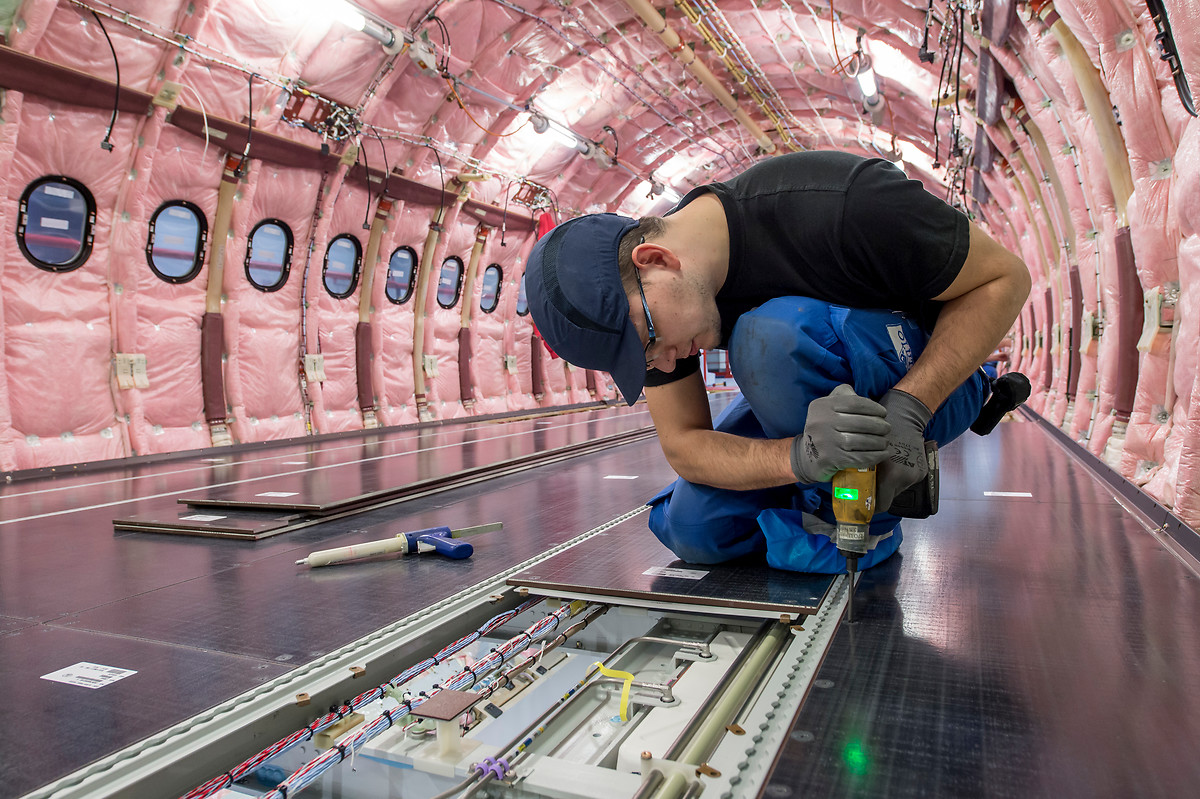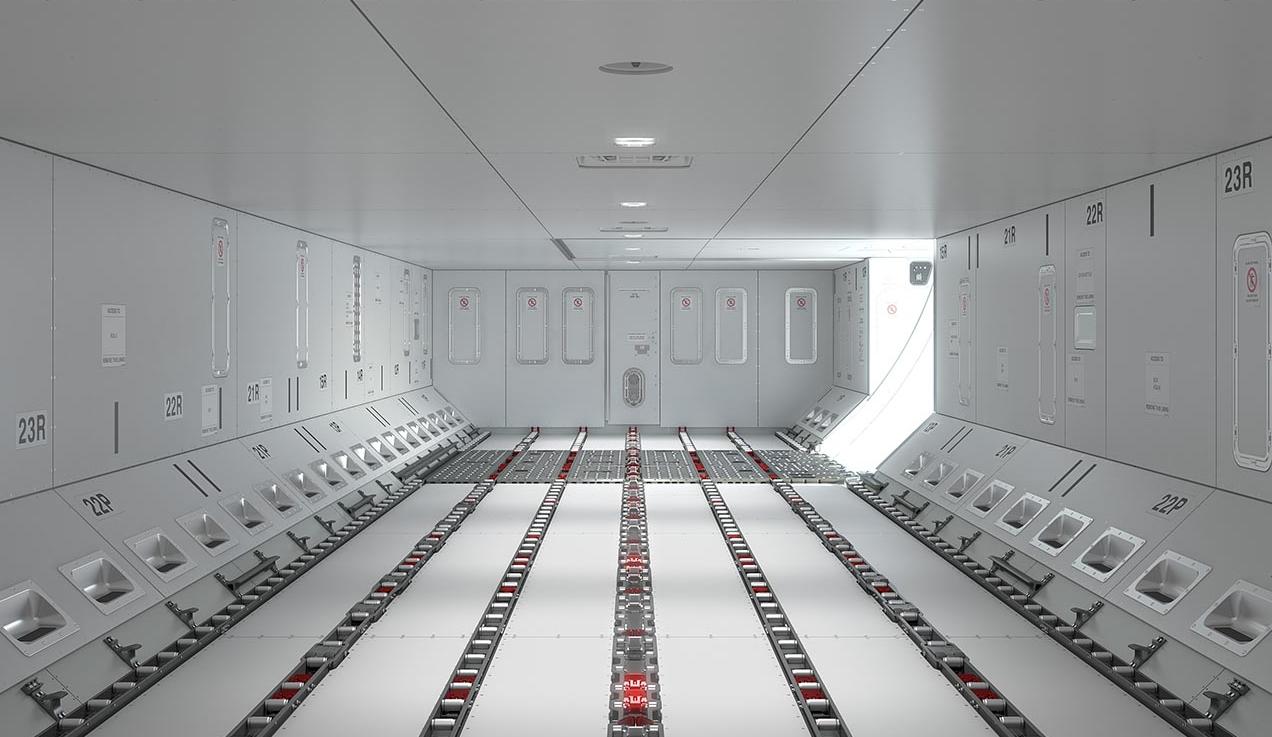A new range of cargo panels released this year will give the Airbus core fleet 100 percent configuration coverage – a huge boost for lead times.
The one-solution-fits-all philosophy has been with us since the Roman invention of the skeleton key, a device capable of opening a range of locks in the event that one of the keys is lost.
For two millennia and counting, we have been inspired to do as the Romans do and create universal solutions to enable our devices to function optimally: from Swiss Army knives and adjustable wrenches to universal power outlets, phone chargers and remote controls. Without a one-solution-fits-all, components can be out of action indefinitely – a problem known by commercial aviation only too well, as an aircraft will only fly if every one of its components is deemed airworthy.
This applies to an aircraft’s floor panels, which come in all shapes and sizes – around 50 to 100 different types on the average narrow-body, 200 to 300 on the average wide-body, and potentially thousands in some cases – across both passenger and cargo areas.
The industry already has a solution: a ‘skeleton key’ compatible with all passenger floor panels in its product portfolio, as well as other semi-finished panels, without differentiating between cargo and passenger types.
Lead times for cargo panels can be lengthy and, on occasion, this was hurting the industry. But all that will soon change thanks to a new Airbus range of cargo floor panels that can provide 100 percent coverage and availability for all widely-operated Airbus models.
Quick availability of floor panels key to airline performance
From a huge inventory of floor panels, finding the correct part number close-at-hand, to return the aircraft to service as quickly as possible, is essential. Aircraft on Ground (AOG) situations are extremely costly for airlines.
But stocking up to thousands of part numbers in easy range of an entire fleet’s movements has never been feasible or practical. Accordingly, it has always been standard practice to only order panels when degradation exceeds SRM repair limits.
In such a case, the lead time for a pre-cut board could easily be two or three months. Heading into the 21st century, therefore, commercial aviation needed a universal solution to its floor panel challenge – a ‘skeleton key’ of its own.
One solution fits all: the Airbus semi-finished floor panel
In the mid-2010s, the first semi-finished floor panels appeared in the aviation aftermarket, revolutionising the way the industry repaired the floors of their aircraft. As the name suggested, the semi-finished floor panel was not a completed floor panel ready for installation. Rather it was a product from which a number of panels could be cut out and used on different models.
Initially, existing semi-finished floor panels in the aftermarket were non-OEM parts produced by third-party suppliers, so lead times were highly variable. But all this changed in 2022 when Airbus released its first range of semi-finished floor panels – the first OEM-designed solution. Not only did the panels come with the Airbus stamp of approval, but they also had a guaranteed lead time of just seven days.
The first range of Airbus Semi-Finished Floor Panels came in two main varieties – both for the passenger areas:
-
Passenger area: seat – in the areas where passengers sit, weight is spread, so panels are less likely to be damaged than in the Passenger Aisle and Galley areas. This semi-finished floor panel is a crossover solution, as it fits the core Airbus family: from the A318, A319, A320 and A321 narrow-bodies to the A330, A340, A350 and A380 wide-bodies

-
Passenger area: aisle and galley – in the areas where passengers and crew are walking, panels are under greater stress, so need to be more durable. Likewise, this semi-finished floor panel provides panels for the core Airbus range.

New cargo panel options great news for Airbus core fleet
With two Airbus Semi-Finished Floor Panels for the passenger areas at hand, therefore, an MRO or airline can be confident of carrying out any repair on an Airbus model within a specific window of time – not much more than a week.
But that has not been possible for the cargo areas on Airbus aircraft – often airlines and MROs are left waiting. However, all this will change following the launch of a new range of Airbus Semi-Finished Floor Panels for the cargo area. Once launched, an MRO or airline willneed a maximum of two semi-finished floor panels at hand to cut out all conceivable cargo panels on every major Airbus model. This is particularly great news for airlines with A350s, as previously there were no semi-finished floor panels available for the bulk areas. The new range came in three varieties – a crossover solution for the container areas and two options for bulk cargo:
-
Cargo area: container – weight is spread, so panels are less likely to be damaged than in the Bulk Cargo area. This semi-finished floor panel provides panels for the core Airbus range
-
Cargo area: bulk cargo on A350s – the area where loose baggage is stored must be more durable. Not only are ground handlers with equipment treading the panels during ramp operations, but baggage can fall from a reasonable height, potentially damaging the floor. This semi-finished floor panel only fits the A350 wide-body
-
Cargo area: bulk cargo on majority of Airbus aircraft – this semi-finished floor panel covers the core Airbus range with the exception of the A350
Floor panels more robust than their predecessors
The latest range of Airbus panels includes two lighter options for the passenger area, both more robust than their predecessors. With enhanced impact resilience under dynamic loading, they are built to withstand greater wear and tear, giving airlines and MROs stronger, longer-lasting solutions that help reduce maintenance costs and downtime.
In the passenger area, the range now includes:
-
Passenger area: seat light – More robust yet lighter than its predecessor, this semi-finished floor panel is less prone to damage. Available for Airbus A320 family aircraft.
-
Passenger area: aisle and galley light – Also more robust and lighter, this semi-finished floor panel is available for Airbus A320 family aircraft.
For all Airbus aircraft types, the PAX Robust panels remain available, offering maximum durability across the full fleet.
Earlier-generation Airbus floor panels were built using honeycomb sandwich construction. Layers of pre-impregnated glass and carbon fibres were carefully arranged in different directions, then bonded with resin under heat and pressure. Inserts provided secure attachment points, while edge fillers helped keep moisture out and protected the panel’s core.
While these panels served reliably for years, innovators have since refined the design for even greater durability. By developing a smaller, more compact honeycomb structure, the latest panels offer higher compression strength and better impact resistance – making them less likely to sustain damage during everyday operations.
While the structural changes are clear, the numbers tell an even more compelling story. Based on in-service data and material testing, Airbus Semi-Finished Floor Panels significantly outperform competing products in the area of structural strength: passenger area panels are up to 160 percent more robust, and cargo container panels offer up to 50 percent improvement in durability.
Even the standard light version narrow-body passenger area panel,, delivers a 115 percent robustness uplift over previous generations. These advances translate into real-world performance, reducing panel replacements, limiting wear in high-stress zones and ultimately keeping aircraft operational for longer periods between floor maintenance events.
Airbus Semi-Finished Floor Panels: a long list of other benefits
So besides their much shorter lead times, and their 100 percent coverage and availability, what other benefits do the Airbus Semi-Finished Floor Panels bring to the table?
High quality – the performance of the panels will equal the high standards of a newly-built aircraft if they are cut and then installed to the exact specifications. This can be performed by personnel with experience of working with composite materials
Versatility – configurations can potentially be changed on an aircraft, although this is not that common. In such an event, finding all the necessary pre-cut panels can be extremely complex. With a couple of pallets of semi-finished floor panels at hand, however, all configurations can be easily accommodated.
Price – semi-finished floor panels are a less expensive option than pre-cut panels – particularly if three panels (the average yield) are cut out of a single semi-finished floor panel. Pre-cut panels, especially when Build to Order rather than in-stock, tend to be more expensive.
Airbus approval – for nearly a decade, the industry made use of PMA semi-finished floor panels, and many airlines and MROs continue to rely on PMA panels. These PMA panels either have FAA or EASA approval or Supplementary Type Certificates granted by regional authorities, so their airworthiness is not in question. However, there is no substitute for having a stamp of quality from an OEM like Airbus. Developed by Airbus Engineering, the panels are officially listed as OEM products in the Airbus Aircraft documentation. This provides absolute guarantees in terms of structural integrity, traceability, warranty adherence and regulatory compliance.
Installation time savings negligible compared to AOG impact
For many years, pre-cut floor panels were the only option for airlines, and it is not uncommon to still see their use stipulated as mandatory in insurance policies and, most particularly, leasing contracts, although this is an evolving area given Airbus's decision to start producing its own semi-finished floor panels.
Another advantage that pre-cut floor panels might have over semi-finished floor panels is that they are measured out to exact specifications and ready for installation upon delivery, whereas a semi-finished floor panel will need a technician experienced in handling composite materials before it is ready to be installed. Nevertheless, this is a reasonably quick process.
Torlon inserts are required to correctly fit the floor panels – along with hard points for panels under regular stress, such as in the aisle. Again, drilling the hard points, directly into the floor panel, requires considerable expertise.
The Torlon inserts have been recently updated. Originally machined in aluminium, the inserts were prone to corrosion, which impacted the performance of the floor panel. Now cast in high performance plastic, the risk of corrosion has been completely eradicated.
SATAIR TAKEAWAY
It’s good news for airlines and MROs that Airbus has modified its ‘skeleton key’ to ensure 100 percent coverage for its semi-finished floor panel. It means airlines and MROs no longer have to question whether the universal panel fits all the needs of their Airbus models, which speeds up the order process. The introduction of a more robust range of panels for the passenger areas is also a boost, with the latest designs delivering greater strength without adding unnecessary weight – helping airlines maintain fuel efficiency targets. Overall, while Airbus Semi-Finished Floor Panels carry the Airbus stamp of approval and can be relied upon to perform as well as the aircraft’s original components, it is their much shorter lead time that so many airlines and MROs find the most appealing, as this can drastically reduce lost revenues incurred by AOG situations.



